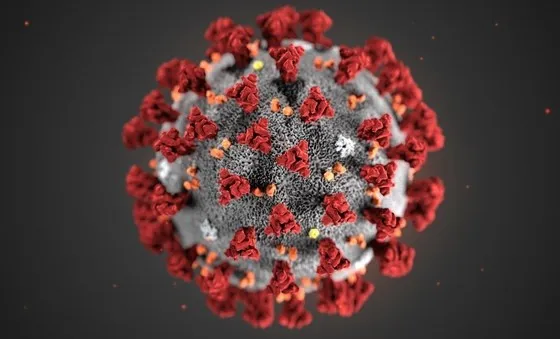Health


Cases of the flu have fallen considerably since they peaked at the end of December, but they still remain elevated across the country. Will there be a second wave?
The latest trends from the Centers for Disease Control and PreventionTrusted Source show that cases of the flu appear to have leveled off rather than continue their downward trajectory. Lab-positive cases of the flu, one of several indicators that the CDC uses to assess seasonal influenza activity, are stable after trending upward last week. Meanwhile, other key indicators like flu-related hospitalizations and visits to healthcare providers are similar to weeks prior.
“We’re not out of the flu woods yet,” said Dr. William Schaffner, a Professor of Infectious Disease and Preventive Medicine at Vanderbilt University.
“There’s still plenty of flu out there and the anticipation is, as per usual, we will have flu through February and then it will really begin to taper during March,” he told Healthline.
Of course, flu isn’t the only respiratory illness circulating right now either. COVID-19 and respiratory syncytial virus infection (RSV)Trusted Source are still highly active as well. According to the latest CDC numbers, there have been more than 133,000 emergency department visitsTrusted Source nationally due to these three combined. Influenza is still the greatest driver, though, causing roughly 79,000 of those emergency room visits.
Is this flu season worse than other years?
There’s good reason to expect another bump in flu cases this year. Historically, influenza activity most often peaks in FebruaryTrusted Source, before finally falling off.
“I don’t have a great crystal ball, but it wouldn’t surprise me if we saw fairly high case numbers through mid-March,” said Dr. Dean Winslow, a Professor of Medicine at Stanford Medicine and infectious disease expert.
The 2023-2024 flu season has also been one of the most robust since the COVID-19 pandemic in 2019-2020.
Last year’s flu season was also strong, but it peaked much earlierTrusted Source, at the end of November, before crashing precipitously in December and January.
This year, the season appears to have peaked in the last week of December.
Right now flu cases are much higher than at the same time last year.
“In general, the country has seen a diminution in new cases of influenza, but it’s still way above the annual epidemic level. Our influenza cases are down somewhat, but they’re on a plateau, basically. They’re maintaining themselves,” said Schaffner.
Where are flu cases concentrated this week?
Monitoring the extent and severity of flu season is complex.
There are also important regional variations in flu activity across the United States. Southern states including Texas, New Mexico, Arkansas, Louisiana, and South Carolina are all showing very high levels of flu activity. Meanwhile, many western states, from Colorado to Oregon show moderate to low levels.
In order to establish what a national snapshot looks like, scientists at the CDC have to use a variety of indicators.
For example, this week the number of laboratory-confirmed positive influenzaTrusted Source cases sits at 15.8%. Out of more than 96,000 tested specimens, about 15,000 of them tested positive for the flu. The percentage of laboratory-confirmed tests has also been relatively stable for the past several weeks.
Another indicator, reported flu-related doctor visits, is at 4.4%. That means that out of all cases reported through one of the CDC’s respiratory illness surveillance programs, 4.4% met the definition of an “influenza-like illness” or ILITrusted Source. An ILI is defined as a fever of 100 degrees or more, accompanied by cough and/or sore throat.
Deaths due to the flu have also been falling in recent weeks. There were 222 flu-related deaths in the past week, compared to 490 the week before.
What to know about different flu strains
Like all viruses, the flu is prone to mutation, meaning that one flu season will differ from the next in terms of severity of symptoms and transmissibility. While there are four types of influenza viruses (A, B, C, and D), the first two are responsible for the annual flu seasonTrusted Source epidemic in the United States.
Influenza A makes up the bulk of cases year after year, while influenza B makes up a much smaller proportion of illnesses.
“There’s an old adage, if you’ve seen one flu season, you’ve seen one flu season. It’s usually the case that influenza B plays a minor role earlier in the annual outbreak and then becomes more prominent as we get through February into March,” said Schaffner.
This year’s virus, “influenza A(H1N1)pdm09,” might sound familiar to some readers. That H1N1 designation is one you’ve seen before.
“This particular strain of flu is very similar to the H1N1 virus which caused the catastrophic ‘Spanish Flu’ pandemic of 1918-19,” said Winslow.
“Interestingly, during the 1918-19 Spanish flu, a lot of cases were seen late in the season also,” he added.
H1N1 is a swine flu subtype of influenza A virus that, in addition to the famous 1918 pandemic, was also responsible for an outbreak in 2009-2010.Trusted Source At that time, it is estimated that the virus was responsible for somewhere between 43-89 million cases across 178 countries.
How to avoid catching the flu
The number one thing you can do to stay well during this flu season is to get a flu shot. Both Winslow and Schaffner recommend getting one, especially if you fall into a high-risk category.Trusted Source Individuals who are 65 years of age or older, children younger than 5, pregnant, or have certain chronic conditions are considered at higher risk from flu-related symptoms.
Other important considerations for staying well include minimizing time spent in large groups indoors and social distancing.
The bottom line
Flu season isn’t over yet. Cases are overall down from their peak at the end of December but are still considerably elevated nationally.
Cases have plateaued, but February is historically one of the peaks of flu season, and there is the potential for another wave.
Experts recommend getting a flu shot, avoiding large indoor group activities, and social distancing to stay safe from the flu this season.

Aerobic exercise is known to help the heart and the cardiovascular system. But now a new study finds that the exercise of tai chi may be a better option for people looking to lower their blood pressure.
According to the new study, tai chi proved to be more effective than aerobic exercise in lowering blood pressure among patients with prehypertension.
The findings were published February 9 in JAMA Network Open.Trusted Source
How to tell if you have high blood pressure
A blood pressure reading Trusted Sourceis comprised of two numbers. The top number is the systolic pressure or the pressure in your arteries when your heart beats. The bottom number is the diastolic pressure or the pressure in your arteries when your heart rests between beats.
A normal blood pressure level is less than 120 systolic over less than 80 diastolic (less than 120/80 mm Hg).
Prehypertension blood pressure is defined in this study as a systolic reading between 120-129 mm Hg and a diastolic pressure of 80-89 mm Hg.
High blood pressure levels or hypertension would be a systolic reading of 140 mm Hg or higher and a diastolic reading of 90 mm Hg or higher.
People taking tai chi saw larger drop in blood pressure
Researchers analyzed 342 participants with prehypertension between the ages of 18 and 65. Participants were placed in two groups. One group performed four 60-minute sessions of tai chi each week for one year. The other group performed the same number and frequency of sessions for aerobic exercise. The duration of the study was 2 and a half years.
“The study’s strengths lie in its robust methodology, including its prospective, single-blinded randomized clinical trial design,” said Dr. Joseph Daibes, cardiologist at Northwell Lenox Hill Hospital. “Randomized controlled trials are considered the gold standard for assessing the effectiveness of interventions as they minimize bias and allow for causal inference. The inclusion of a large sample size and its 12-month duration further enhances the reliability of the findings, providing a comprehensive assessment of the long-term effects of tai chi and aerobic exercise on blood pressure management.”
At the end of one year, there was a significant change in systolic blood pressure for both groups but a bigger drop in the tai chi group.
The researchers found an average systolic blood pressure change of −7.01 mm Hg in the tai chi group vs −4.61 mm Hg in the aerobic exercise group.
Daibes continued: “The study’s findings indicating that tai chi was more effective than aerobic exercise in reducing [systolic blood pressure] among individuals with prehypertension offer valuable insights for healthcare providers and patients alike. Tai chi, as a mind-body exercise, may offer unique benefits beyond traditional aerobic activities, such as stress reduction, improved relaxation, and enhanced mental focus, which could contribute to its superior efficacy in lowering blood pressure.”
Tai chi can help with anxiety, depression, and sleep issues
Growing evidence demonstrates the mental and physical benefits of tai chi, which include reducing anxiety and depression, improving sleep and cognitive performance, and promoting heart health.
“Tai chi exercise is characterized by slow, purposeful movements,” Joe Petreycik, RN, and physiotherapist, Bridgeport Hospital, explained. “It involves meditative breathing, mindfulness, and imagery. With meditation and imagery accepted as effective stress reduction techniques which can lower blood pressure, it makes sense that tai chi exercise would have similar blood pressure lowering benefits.”
In short, tai chi seems to have an advantage when it comes to lowering blood pressure in people dealing with prehypertension. This exercise primarily focuses on the mind-body connection.
“The slow, deliberate movements combined with focused breathing create a serene environment that’s perfect for dialing down stress levels – a big win for blood pressure management,” said Daibes.
Also, tai chi is extremely gentle on the body, making it accessible to most people.
“It’s not like your typical high-intensity workouts; it’s more like a peaceful dance that’s good for the soul,” Daibes explained. “And the benefits don’t stop there – tai chi also works wonders for circulation and cardiovascular health, which are key players in keeping blood pressure in check. With its holistic approach to wellness, tackling both physical and mental well-being, tai chi is shaping up to be a game-changer for folks looking to get a handle on their blood pressure.”
The health benefits of tai chi
Tai chi can improve your health in numerous ways, according to Dr. John Higgins, professor and sports cardiologist with UTHealth Houston. These include:
Lowering stress and blood pressure
Improving muscle strength
Improving balance and flexibility
Improving joint health
Improving sleep quality
Increasing bone density
Boosting the immune system
Improved lung function
Reduced cardiovascular disease
“Tai chi can certainly be helpful in improving exercise tolerance, particularly in those with barriers to regular aerobic exercise,” Petreycik stated.
Its gentle yet disciplined movements help improve balance, flexibility, and joint health, making it a popular choice for people looking to stay agile and reduce stiffness, especially if they have arthritis or other joint issues, Daibes explained.
Plus, the focus on deep breathing and mindfulness makes tai chi a great stress reliever, helping you unwind and find inner peace, he added.
ADVERTISING
Top ways to lower blood pressure
Besides tai chi, there are several other effective ways to lower blood pressure.
“Regular exercise, such as brisk walking or swimming, along with a healthy diet rich in fruits, vegetables, and whole grains, can make a significant difference for reducing blood pressure,” said Daibes. “Managing weight, reducing sodium intake, limiting alcohol consumption, quitting smoking, and prioritizing quality sleep are also essential steps.”
Stress management techniques like deep breathing exercises and meditation can help, as can medication when necessary. It’s crucial to find the right combination of lifestyle changes and medical interventions with the guidance of a healthcare provider for optimal results, Daibes added.
Also, the value of aerobic exercise in lowering blood pressure should not be overlooked.
“Moderate intensity aerobic exercise is considered the gold standard for exercise-based treatment of high blood pressure,” Petreycik explained. “Because of the recommended guidelines of 150 minutes or more per week, this considerable time commitment may be difficult for many to adhere to.”
There is a growing body of evidence showing a dose-response relationship between exercise intensity and blood pressure. Simply put, as the exercise intensity increases, one can expect a lower resting systolic and diastolic blood pressure, he explained.
People who are physically capable and have approval from their physician “to participate in high intensity interval training (HIIT), there is potential for reductions in blood pressure similar to that with taking commonly prescribed blood pressure medications,” said Petreycik. “Adapting to the higher intensity aerobic exercise improves cardiorespiratory fitness which has been shown to address common comorbidities related to high blood pressure, such as diabetes and obesity.”
From a dietary perspective, the heart-healthy Mediterranean Diet can help lower blood pressure with its emphasis on a rich variety of plant-based foods, protein sources low in saturated fat and cholesterol, and inclusion of unsaturated fats such as nuts, seeds, and oils, Petreycik stated.
Adhering to recommended guidelines for sodium intake can also help lower blood pressure. For most people, this may be consuming less than 2,300 mg per day. For others with preexisting health conditions, their doctor may recommend as little as 1500 mg per day.
The combination of a heart-healthy diet and exercise regimen can assist with weight loss or weight management. Losing as little as 10lbs if you are considered overweight or obese can have a positive impact on lowering blood pressure, Petreycik added.
Takeaway
According to a recent study, tai chi was more effective compared to aerobic exercise in lowering blood pressure among prehypertension patients.
There are many health benefits of tai chi, which include decreasing stress, boosting mood, and promoting heart health, all of which can help with hypertension.
Other ways to lower blood pressure include working out on a regular basis and eating a healthy diet rich in fruits, vegetables, and whole grains.

Gene therapy has transformed the lives of people with a genetic disorder that causes painful and unpredictable swelling attacks.
Angiodema, thought to affect 50,000 people worldwide, can be seriously debilitating, affect airways, and occasionally prove fatal.
Patients treated with a single dose of gene therapy Crispr-Cas9 showed little sign of further symptoms.
The therapy also has big potential as a treatment for other genetic conditions.
"It looks as if the single-dose treatment will provide a permanent cure for my hereditary angioedema patients' very disabling symptoms," principal investigator Dr Hilary Longhurst, a clinical immunologist at Auckland hospital, said.
Gene editing technique could transform future
UK approves gene-editing drug for sickle cell
Angiodema causes swelling in the soft tissues and can affect many parts of the body.
Graphic explaining how Crispr-Cas9 gene editing works
Cleveland Firman, from Suffolk, who received the treatment in the UK said: "The randomness, unpredictability and potential severity of the attacks has made trying to live my life almost impossible. I spent my life constantly wondering if my next attack would be severe.
"The swellings are painful and disfiguring. I was embarrassed to go out in case of an attack. I've been hospitalised with swellings on my neck and throat that have affected my ability to breathe.
"Since the treatment, I've not had a single attack. I've had a radical improvement in my physical and mental wellbeing.
"I am very positive about the future. I am now volunteering where I can meet like-minded people. The freedom has opened up my world and improved my self-confidence."
Single infusion
Crispr-Cas9 is a DNA cutting and pasting system that scientists have borrowed from nature. Bacteria use it to protect themselves against foreign DNA from viruses. Scientists have been using it in the lab to target and cut out faulty DNA in human cells that cause illnesses.
However, the edits are not always perfect and the cuts can end up in the wrong place.
Angiodema causes painful swelling
In the trial, published in the New England Journal of Medicine, angiodema symptoms were reduced by 95% among a small group of patients from the UK, New Zealand, and the Netherlands given a single infusion - targeted at cells in the liver - to reduce the KLKB1 gene's ability to produce plasma prekallikrein.
Just one of the patients continued to show symptoms, which were only minor.
Dr Padmalal Gurugama, who led the UK branch of the research, at Cambridge University Hospital, said the therapy could significantly improve lives.
"Hereditary angioedema can cause patients severe swellings and intense pain, which can be life-threatening as well as restricting normal activities, such as going to work or school," he said.
"Because it is often misdiagnosed, many patients undergo unnecessary treatments and invasive procedures.
"This is not the only condition in which Crispr-based gene editing is being tried.
"There are a lot of clinical trials targeting various other conditions that are producing similar results."
The patients will be followed up for 15 years - to monitor the treatment's long-term safety and efficacy.
Larger trials are also scheduled.
By Richard Warry

Health experts agree that there is no wrong way to incorporate olive oil, often referred to as liquid gold, into your diet as it is a versatile and nutritious fat.
Research suggests that those who make the switch will also enjoy a long list of health benefits — but why is it?
It is monounsaturated and rich in antioxidants and other healthy compounds, unlike animal or processed fats, The New York Post reported.
Sip a spoonful, drizzle it on your ice cream, or pour it into your coffee, this liquid gold can be consumed in various ways.
Olive oil is most commonly used as a natural laxative, due to its role in treating constipation, a common gastrointestinal issue that leads to expensive doctor visits.
The problem is caused by the colon absorbing too much water from the poop, resulting in hard, hard-to-push stools, according to a Cleveland Clinic study.
Olive oil can alleviate bowel issues by soothing the inside and softening stool by absorbing more water. Additionally, studies suggest that increasing olive oil intake may reduce the risk of dementia, the seventh leading cause of death, according to the World Health Organization.
"Some antioxidant compounds in olive oil can cross the blood-brain barrier, potentially having a direct effect on the brain," Dr Anne-Julie Tessier of Harvard said. "It is also possible that olive oil has an indirect effect on brain health by benefiting cardiovascular health."
This condiment is a key component of the Mediterranean diet and has been linked to a reduction in cardiovascular disease, cancer, neurodegenerative disease, and respiratory disease, with studies showing that over half a tablespoon of olive oil can lower these risks.
Sipping one or two tablespoons of olive oil on an empty stomach early in the morning aids digestion, waste elimination, and regulates intestinal microbiota, as it helps line the stomach and aids digestion.
Certain variations of olive oil use heat to extract as much juice from the fruit as possible but it is made using a cold-pressing process and left unrefined, retaining some of the antioxidants and bioactive compounds.
Experts recommend consuming a tablespoon of extra virgin olive oil to absorb as many nutrients as possible.

WASHINGTON (Agencies): This week, the Food and Drug Administration (FDA) disclosed that 561 deaths have been linked to previously recalled sleep apnea machines. The agency initiated a recall in June 2021 for Philips Respironics BiPAP and CPAP machines, along with ventilators, citing concerns over the breakdown of the polyester-based polyurethane (PE-PUR) sound abatement foam used in these devices to reduce sound and vibration.
Following the initial recall, the FDA has received reports of 561 deaths associated with the breakdown of the PE-PUR foam or suspected foam breakdown. The agency highlighted the potential risks, explaining that black debris or certain chemicals released from the foam could be inhaled or swallowed by individuals using the affected devices.
BiPap and CPAP machines, designed to assist those with sleep apnea, a disorder causing breathing interruptions during sleep, have become central to managing the condition. The Cleveland Clinic describes sleep apnea as a condition prompting the brain to awaken individuals to resume breathing, disrupting restful and healthy sleep. Both machines function by delivering pressurized air through a mask worn over the face during sleep.
Since the recall, the FDA has received over 116,000 reports of actual or suspected incidents involving foam breakdown in these machines, affecting more than 5 million devices. The ongoing developments underscore the critical need for continued vigilance and awareness surrounding the safety of sleep apnea equipment.

Health experts have spilled the tea on an anti-ageing secret.
According to research conducted by Sichuan University in Chengdu, China, drinking three cups of tea a day may increase your lifespan, the New York Post reported.
The research, published in The Lancet Regional Health, surveyed 7,900 Chinese citizens between the ages of 30 and 79 and around 5,600 British adults between the ages of 37 and 73 about their tea-drinking habits.
They were questioned about the type and quantity of tea they consumed every day. By inquiring about their blood pressure, cholesterol and body fat percentage, researchers also determined their biological age.
Since the study was only "observational", it was impossible to determine whether or not drinking tea delayed biological ageing.
A study showed that regular tea drinkers appeared to be ageing more slowly. In addition to eating a healthy diet and drinking alcohol, the majority of these individuals were male and had lower rates of anxiety and sleeplessness.
The researchers concluded that drinking three cups of tea or six to eight grams of tea leaves a day may provide the most obvious anti-ageing advantages.
They concluded that, among regular tea users, moderate tea drinking showed the best anti-ageing advantages.
Participants who stopped drinking tea appeared to show an increase in ageing, according to the study.
Researchers think that the bioactive component of tea called polyphenols "modulates gut bacteria" and may be involved in the immune system, metabolism, and cognitive function regulation.
They also mentioned how worms, fleas and mice can live longer when exposed to flavonoids, "a kind of polyphenol that is rich in tea."
Research is mounting to support the idea that drinking tea may help prevent age-related illnesses, including dementia, diabetes mellitus, heart disease and various forms of cancer. It has also been linked to a decreased risk of death.
They deemed the possibility that drinking tea may slow down human biological ageing to be "plausible" in light of the available data.
Researchers found no "substantial differences" in the tea-drinking habits of Chinese and British citizens.

During a session at the forum, WHO scientists urged global leaders to collaborate in devising strategies to prevent or manage a potential Disease X pandemic. Emphasizing the need for better communication strategies to counter misinformation and conspiracy theories, experts addressed concerns about the potential severity of such an outbreak. Notably, some individuals took to social media platforms, including X (formerly Twitter), to express skepticism, labeling the session as a conspiracy against freedom.
NEW YORK, Jan 23: In a stern message delivered at the World Economic Forum, the World Health Organization (WHO) sounded the alarm, cautioning that the world could face a future pandemic 20 times more severe than the ongoing COVID-19 crisis. Dubbed Disease X, this theoretical scenario acknowledges the possibility of a global outbreak caused by an unknown pathogen rather than the transmission of an existing disease.
Scientists identified a respiratory virus, likely originating in animals and not yet transmitted to humans, as the most probable cause for Disease X. The WHO underscored the importance of preparedness, warning that an unanticipated Disease X pandemic could result in more devastating consequences than COVID-19, which has claimed over seven million lives globally.
Taking proactive measures, the WHO has initiated efforts to guard against future pandemics, including support for technology sharing and bolstering disease surveillance between nations. While Disease X took center stage during the session, epidemiologists remain vigilant about other potential pandemics, including viruses such as Ebola, Marburg, Crimean-Congo hemorrhagic fever, Lassa fever, SARS, MERS, Nipah virus, Rift Valley Fever, Zika virus, and potential new iterations of COVID-19.


